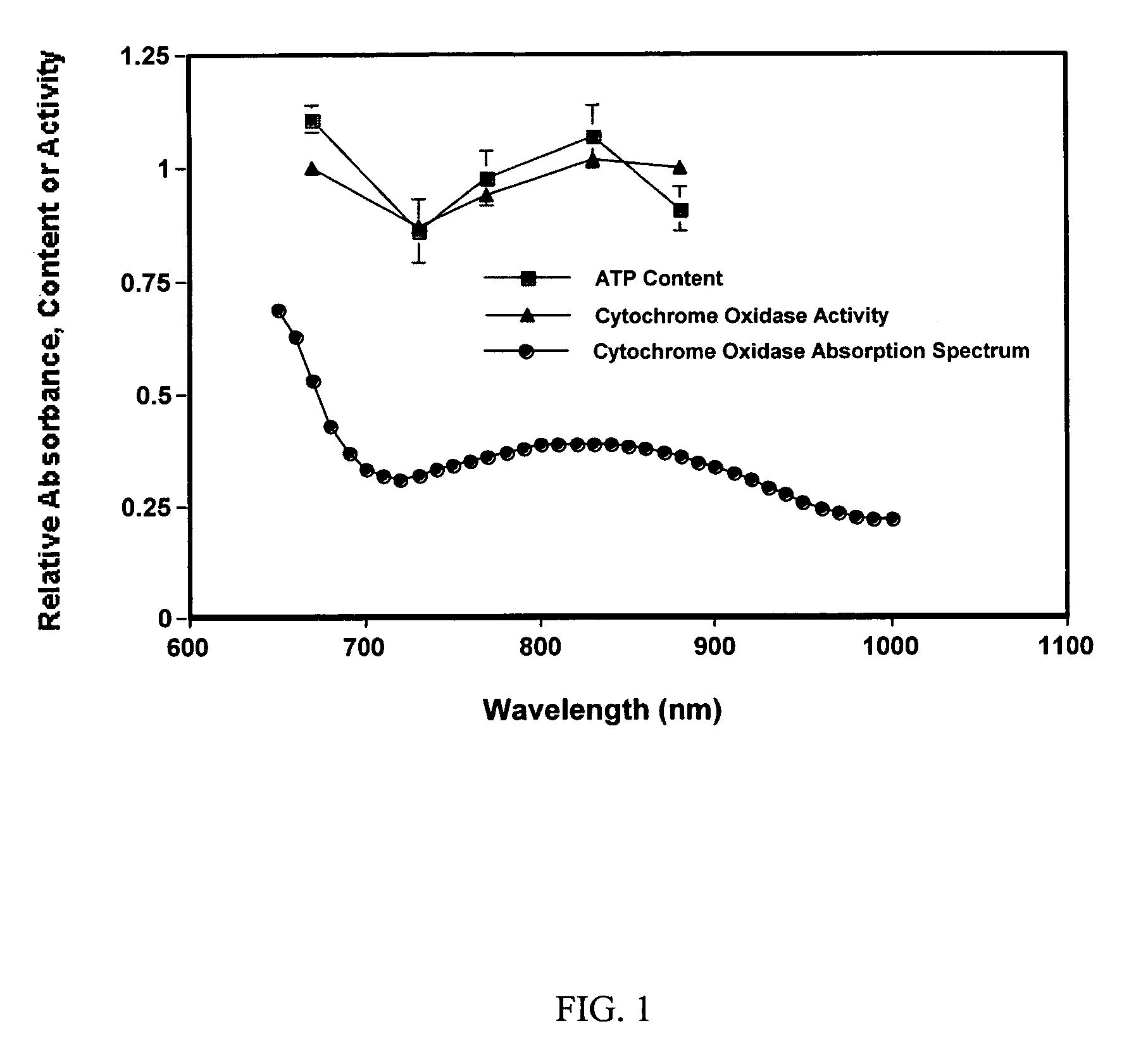Red to near-infrared photobiomodulation treatment of the visual system in visual system disease or injury
a near-infrared and photobiomodulation technology, applied in radiation therapy, medical science, therapy, etc., can solve the problems of unelucidated mechanisms responsible for the beneficial effects of photobiomodulation, and achieve the effects of improving healing, improving retinal function, and improving visual function
- Summary
- Abstract
- Description
- Claims
- Application Information
AI Technical Summary
Benefits of technology
Problems solved by technology
Method used
Image
Examples
example 1
LED Treatment Protects the Rat Retina from Histopathic Changes Induced by Methanol-Derived Formate.
In General
[0064]We hypothesize that the therapeutic effects of red to near-IR light result, in part, from the stimulation of cellular events associated with increases in cytochrome c oxidase activity. In support of this hypothesis, we have recently demonstrated in primary neuronal cells that LED photobiomodulation (670 nm at 4 J / cm2) reverses the reduction in cytochrome oxidase activity produced by the blockade of voltage-dependent sodium channel function by tetrodotoxin (M. T. T. Wong-Riley, et al., NeuroReport 12:3033-3037, 2001). The present studies extended these investigations to an in vivo system to determine whether 670-nm LED treatment would improve retinal function in an animal model of methanol-induced mitochondrial dysfunction.
[0065]Using the electroretinogram (ERG) as a sensitive indicator of retinal function, we demonstrated that three brief (2 minutes, 24 seconds) 670-nm ...
example 2
Animal Model of Retinal Protection.
[0098]Methanol intoxication produces toxic injury to the retina and optic nerve frequently resulting in blindness. The toxic metabolite in methanol intoxication is formic acid, a mitochondrial toxin known to inhibit the essential mitochondrial enzyme, cytochrome oxidase. The Eells' laboratory has developed a rodent model of methanol toxicity which replicates the metabolic and retinotoxic manifestations of human methanol toxicity. This animal model also manifests many features associated with retinal aging and many clinically important retinal and optic nerve diseases and thus serves as an excellent experimental model for the investigation of treatments for retinal and optic nerve disease.
[0099]Studies were undertaken to determine if exposure to monochromatic 670 nm radiation from light-emitting diode (LED) arrays would protect the retina against the toxic actions of methanol-derived formic acid in this animal model of ocular disease. Methanol-intox...
example 3
Nonhuman Primate Model of Retinal Protection.
[0101]We have initiated studies of laser retinal injury in a nonhuman primate model. To date, we have performed two experiments using this animal model. In each experiment one monkey was lased without LED treatment and one lased with LED treatment (670 nm, 4 J / cm2). A laser grid (128 spots delivered to the macula and perimacula) was created in the central retina of right eye of each animal. This grid consisted of grade I and II burns, photocoagulating the photoreceptors and outer nuclear layer of the retina. Multifocal ERG was performed to assess the functional state of the retina. In the first experiment, the LED-treated monkey was treated at 1, 24, 72 and 96 hours post injury. ERG amplitude in both LED treated and untreated monkeys was temporarily increased shortly after laser injury and this increase was greater in the LED-treated monkey. Assessment of the severity of the laser burn in LED treated and untreated animal demonstrated a gr...
PUM
 Login to View More
Login to View More Abstract
Description
Claims
Application Information
 Login to View More
Login to View More - R&D
- Intellectual Property
- Life Sciences
- Materials
- Tech Scout
- Unparalleled Data Quality
- Higher Quality Content
- 60% Fewer Hallucinations
Browse by: Latest US Patents, China's latest patents, Technical Efficacy Thesaurus, Application Domain, Technology Topic, Popular Technical Reports.
© 2025 PatSnap. All rights reserved.Legal|Privacy policy|Modern Slavery Act Transparency Statement|Sitemap|About US| Contact US: help@patsnap.com



